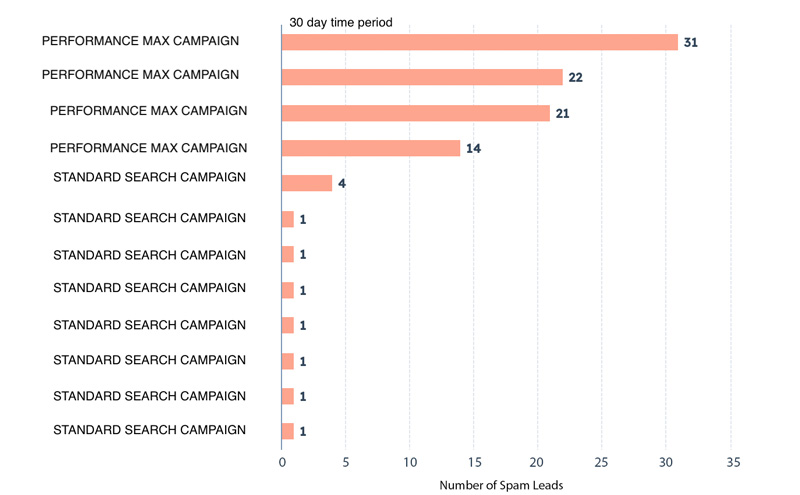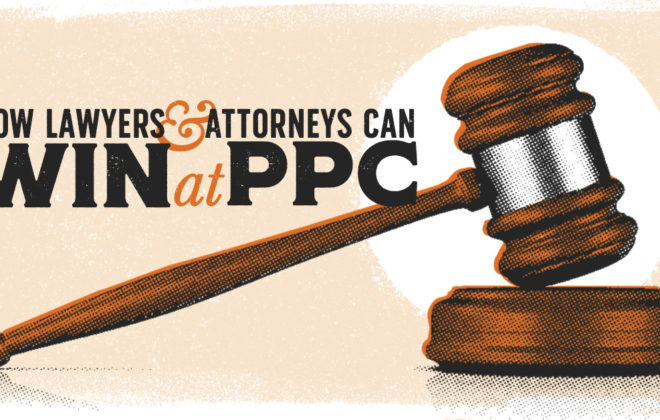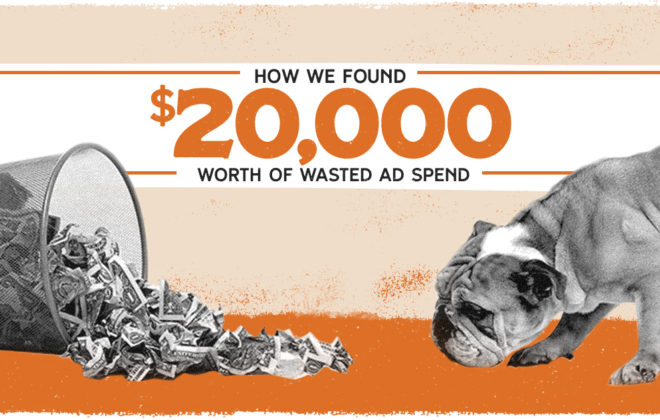
Google PMax: Get the Most Out of Your Ad Campaigns While Combating Fraud
Performance Max (PMax) is an automated ad campaign from Google that’s meant to streamline multi-channel ads while boosting conversions. In other words, hit the easy button and get a better result than you could if you ran search, display, and YouTube on its own. If that sounds like a hefty promise, you’re right.
Google has made big claims since launching PMax in late 2021. Like any Google feature – think back to TCPA bidding – it didn’t work great until it did. We think we’re in the ‘it kinda works’ stage. It still takes a human touch to monitor and adjust to create a successful PMax campaign.
One major learning we have had that made us say DANGER, DANGER, DANGER – We see a lot of fraud when it comes to lead gen with Pmax, but more on that in a moment.
After using PMax for clients in a variety of industries, we’re laying out some of the biggest roadblocks along with tested solutions so that you can get the most out of Pmax as a strategy within Google Ads
How Performance Max campaigns work for e-commerce and B2B
Google PMax uses AI technology to spread ads across multiple Google channels, including features like smart bidding and targeting to reach the campaign’s designated goal. It uses different ad formats based on what is expected to work best for each platform and your target audience.
Give Google everything, set an objective, and it should work its magic to get you the end result.
To get started, you must upload a variety of digital assets, like ad copy, images, logos, and videos. PMax then mixes and matches those assets to create customized ads within your budget.
Sounds amazing, right?
But just like any new Google feature, PMax only kind of works. Eventually, we expect it to be great, but it’s just not there yet. The same thing happened when Google launched automated bidding in 2016. When it worked, it was great, but more often than not, it just slowly lowered the spending and in some cases, just killed off past performers. But now, automated bidding is far superior and beats manual bids nine times out of 10.
We expect PMax to reach that level in the future, it’s just not there yet.
Ecommerce vs. B2B PMax campaigns
PMax has been ‘working’ in e-commerce because you can’t fake the funk on actual purchases. There seems to be a mix of still running old shopping campaigns with some Pmax for best results. B2B/B2B lead generation campaigns it’s been a different story…fraud and a lot of it.
Scammers have learned to hack the system and get paid ads to show up on their Youtube channels – faking conversions so their placements ‘perform’ pushing more and more volume to them. They profit from the shared fees from Google. On the surface the leads ‘look’ good but your sales team will complain they can’t reach people, emails bounce and other problems.
If you look into the actual Youtube channels they’re often in other languages with random topics.
We’ve seen this PMax lead form fraud happen with our B2B clients. While e-commerce tends to perform better, we’ve also heard reports of spammy store visits from a single address or bizaree YouTube channels.
Regardless of your business model, you need to learn how to identify Performance Max junk leads in order to optimize your campaign.
Tell Us Your Goals
Send us your contact info and we'll follow up with a quick call to find out more about your goals and talk about how Clicks and Clients can help.
4 ways PMax isn’t performing the way you want
The good news is that there are ways to adjust your PMax campaign to make it successful. Before we share our solutions, look at four types of PMax fraud you might come across — some are intentional, while others are just from early-stage limitations. Either way, they need to be addressed if you plan to spend money on this campaign format.
#1: Invalid traffic (IVT) fraud
Invalid traffic fraud is when bad actors create fake signals to trigger PMax’s AI to assign it positive intent. That creates a snowball effect of bringing more and more fake traffic to your account. You’re paying for ad clicks that will never convert into sales.
One study conducted between 2022 and 2023 estimated that 5.5% of Google ads traffic was invalid. If you’re spending $100,000 a month on Google PMax ads, you could be wasting an average of $5,500 a month, or $66,000 a year. Ouch.
We’ve seen this type of invalid traffic fraud first hand. We have a U.S.-based client in the B2B SAAS health insurance space. Since launching a PMax campaign, a large percentage of its ad spend has gone to a YouTube channel in Arabic that has nothing to do with health insurance. Forms we’re filled out, emails & phone numbers but 99% of the leads we couldn’t contact.
The good news is we were able to identify the issue and start making adjustments to reduce those PMax spam leads.

#2: Too much spam
There’s no way around it — you will have spam when using Performance Max at this stage. These are the most common types you may encounter include:
Click bots: Click bots are programmed to impersonate real users. Why do PMax campaigns get fake leads? They can be used for a number of purposes, but in the digital ad world, they are used to click on ads or links in huge numbers. The intent is to deplete your marketing budget. The operation may be funded by a competitor in order to get their ads to show up in front of quality leads instead of yours.
Click-farm leads: With better bot detection tools available, some scammers have begun to use humans instead. Low-wage workers click on ads and lead forms with the same intention of disrupting ad budgets.
At Clicks and Clients, the most problematic spam strategy we see is bots filling out forms with fake emails coming from suspect ad placements.
#3: Google PMax limitations
This next issue doesn’t involve bad actors but still hurts your ad campaign performance: the limitations of the current version of Google PMax. A few areas need more work before we would consider using PMax as a significant portion of any ad budget.
Lack of control: PMax automates your entire campaign, removing the ability to change different campaign variables based on your own data and experience. You can’t adjust bid strategies for specific types of assets (like YouTube video ads versus Gmail ads). You also don’t control how PMax uses the assets you upload to your campaign.
Limited data: You get very few insights on your individual PMax campaigns. It’s called a black box system, which means you put in your campaign details (assets and goals), you find out the results at the end, but there’s a nebulous part in the middle where you don’t know what’s happening.
In other words, you don’t get data to understand what works and what doesn’t. Did the majority of your conversions come from Search, YouTube, or another channel? Right now, there’s no way to know.
#4: Easy human error
PMax is supposed to be easy for beginners and those with limited marketing resources. But it’s not as simple as clicking a button and launching a campaign that brings in all the leads you ever dreamed of.
You need clear goals (like submitting a form or booking an appointment) in order to have a chance at a well-performing campaign. If you don’t know what you’re doing, you’ll end up sabotaging your campaign.
Here are some common mistakes and myths that are easy to avoid to maximize your campaign options.
PMax will build you an ad campaign from scratch: It’s impossible to start an ad campaign in PMax without any existing information. You still need existing data to inform your campaigns. You’re not ready to get started until you have at least 50 monthly conversions.
PMax designs your entire campaign: This is not true. You need assets such as images, logos, videos, headlines, copy, and descriptions to populate your campaign. And the quality of those assets impacts your outcomes.
Your PMax campaign runs on autopilot: Think you can “set it and forget it?” You’re setting up your campaign for failure if you never look at what’s happening once you launch. We recommend logging in to evaluate your campaign every two weeks and make adjustments as needed.
How to get rid of Performance Max spam leads
If you can’t set your campaign on autopilot to prevent PMax lead fraud and get quality leads, what steps do you need to take?
There are some third party solutions that claim to work, but we’re not fans. Instead, we recommend a consistent process to monitor and adjust your campaigns to identify problem areas.
Skip the third party solutions
We’ve tried using third party software like ClickCease that claims to clear your funnel of invalid traffic. While it blocks IP addresses, claims to identify bad actors, every refund request we’ve sent to Google with their data, Google comes back and says we either never charged you or already refunded you for that. If it does identify fraud better than Google, it should be getting refunds – and it doesn’t. Not that we’ve seen in several years of use.
Our verdict? It diminishes spam, but it doesn’t stop it altogether.
It seems like a net-neutral product that has never added value for our clients. It’s more realistic and productive to use human-based solutions to combat PMax fraud.
Use human monitoring to increase quality leads
An automated solution would be amazing, but right now there’s no silver bullet to solve PMax fraud and spam.
Instead, you need to monitor your results and remain skeptical if your campaign results look too good to be true. You may not have as much data as you’d like from PMax, but look as deep as possible, including your conversion rates. This is a good place to determine whether or not you’re getting spam leads.
A great solution to PMax fake leads is to add layers to your forms. Include conditional logic that leads to a different confirmation page to help weed out spam leads. In some cases, you may want to reduce or cut your ad spend if it’s clear you’re not getting quality leads.
Google also recommends adding another asset group to a new audience or revamping your assets altogether.
Better to wait for later adoption
Like most new features rolled out by Google, it’s too early to go all in on PMax. The results are too patchy to commit your entire paid ad budget to it.
We saw the same thing when Target CPA bidding came out. It worked sometimes but also dragged some accounts into the mud with lower bids. But over time, it’s gotten better and now you have to use Target CPA.
The same lesson holds true for PMax. We expect it to get better with time, but the potential for fraud and skewed results are too high right now.
Instead, figure out the best way to experiment and track PMax while still anchoring your online paid ad campaigns with more reliable strategies.
Need help making that happen? Schedule a discovery call today!
Tell Us Your Goals
Paul Rakovich
Browse All PostsTell Us Your Goals
Recent Posts
- Google PMax: Get the Most Out of Your Ad Campaigns While Combating Fraud
- Lead Ads Don’t Have to Suck: How to Leverage Them Correctly
- Why More Expensive PPC Ads are Almost Always Worth It
- Unlock the Secrets of Organic CPA: The Ultimate Guide to Cost Per Acquisition
- Secrets We’ve Learned from Years Working with Paid Account Reps at Meta, TikTok, LinkedIn and Google


